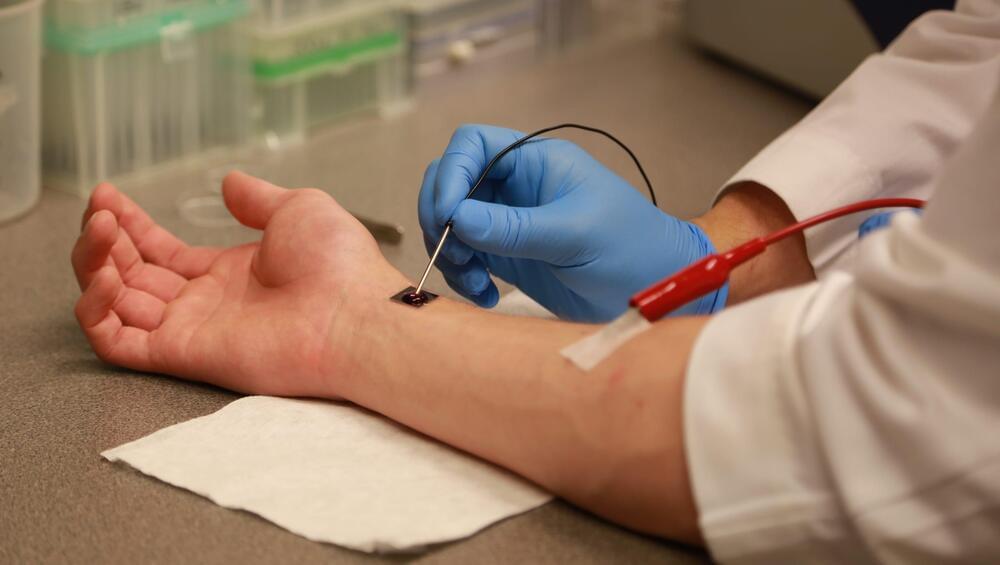The Great Salt Lake (Utah, USA) has hit its’ lowest water level in recorded history.
This Lake is what survives from Lake Bonneville.
The Great Salt Lake (Utah, USA) has hit its’ lowest water level in recorded history.
This Lake is what survives from Lake Bonneville.

Meta CEO Mark Zuckerberg failed to anticipate a newer trend in social networking that contributed to the success of rival TikTok.
In an interview published Wednesday in analyst Ben Thompson’s Statechery newsletter, the Facebook founder said he “sort of missed” a newer way that people “interact with discovered content” via social networking services. People are increasingly using their social networking “feeds” to discover compelling content as opposed to viewing the media shared by the friends that they follow, he explained.
Although people still interact with content that their friends share in their feeds, the overall social networking trend has “by and large shifted to you use your feed to discover content, you find things that are interesting, you send them to your friends in messages and you interact there,” Zuckerberg said.

O.o!!!.
Johns Hopkins researchers say that an experimental anticancer compound appears to have reversed behaviors associated with schizophrenia and restored some lost brain cell function in adolescent mice with a rodent version of the devastating mental illness.
The drug is one of a class of compounds known as PAK inhibitors, which have been shown in animal experiments to confer some protection from brain damage due to Fragile X syndrome, an inherited disease in humans marked by mental retardation. There also is some evidence, experts say, suggesting PAK inhibitors could be used to treat Alzheimer’s disease. And because the PAK protein itself can initiate cancer and cell growth, PAK inhibitors have also been tested for cancer.
In the new Johns Hopkins-led study, reported online March 31 in the Proceedings of the National Academy of Sciences, the researchers found that the compound, called FRAX486, appears to halt an out-of-control biological “pruning” process in the schizophrenic brain during which important neural connections are unnecessarily destroyed.

Circa 2017 face_with_colon_three
To demonstrate this, researchers stored historic audio recordings on these molecules for the first time and then retrieved them with 100 percent accuracy. The experiment showed that DNA not only offers a place to save a dense package of information in a tiny space, but because it can last for hundreds of years, it reduces the risk that it will go out of date or degrade in the way that cassette tapes, compact discs, and even computer hard drives can.
“DNA is intrinsically and exquisitely a stable molecule,” Emily Leproust, CEO of the biotech firm Twist Bioscience, which works on DNA synthesis, told Seeker. Her company collaborated with Microsoft, the University of Washington, and the Montreux Jazz Digital Project on the DNA data feat.
The two performances they stored and retrieved, “Smoke on the Water” by Deep Purple and “Tutu” by Miles Davis, are the first DNA-saved files to be added to UNESCO’s Memory of the World Archive, a collection of audio and visual pieces of cultural significance. Both were performed at the Montreux Jazz Festival, an annual event in Switzerland.

I had quite a thought-provoking discussion on modern education with Boris Zimin, the head of the Zimin Foundation, which funds education and research.
The Zimin Foundation is a non-profit organization established by the Zimin family to aid education and science. The Foundation partners with distinguished universities and funds research and educational projects that combine academic excellence with high potential for positive, real-world impact. Since the start of the Russian invasion of Ukraine, the Zimin Foundation has been supporting researchers and students affected by the war. I spoke with philanthropist Boris Zimin, the head of the Zimin Foundation, about his perspective on modern education.
Julia Brodsky: From your experience working with various educational funds and organizations, what do you think should be the emphasis of modern education?
Boris Zimin: While most of the world is prioritizing STEM these days, I have been contemplating the necessity of a comprehensive humanitarian and ethical emphasis in education. Consider the example of education in Soviet Russia, which was well-known around the world for providing a solid STEM background. The goal of Soviet education was to raise workers and soldiers ready for building the “communist future,” and the questions of good and evil never arose — the pre-made answers to those questions were the prerogative of the ruling communist party. Such education produces savvy technical specialists and “effective managers” who are not used to questioning the social and humanitarian consequences of their actions. And that hasn’t changed in the modern, post-Soviet period, as demonstrated by the brutality of Russian forces in Ukraine. In my opinion, education should first and foremost focus on ethics.


Circa 2018 face_with_colon_three
Since the time of Hippocrates and Herophilus, scientists have placed the location of the mind, emotions and intelligence in the brain. For centuries, this theory was explored through anatomical dissection, as the early neuroscientists named and proposed functions for the various sections of this unusual organ. It wasn’t until the late 19th century that Camillo Golgi and Santiago Ramón y Cajal developed the methods to look deeper into the brain, using a silver stain to detect the long, stringy cells now known as neurons and their connections, called synapses.
Today, neuroanatomy involves the most powerful microscopes and computers on the planet. Viewing synapses, which are only nanometers in length, requires an electron microscope imaging a slice of brain thousands of times thinner than a sheet of paper. To map an entire human brain would require 300,000 of these images, and even reconstructing a small three-dimensional brain region from these snapshots requires roughly the same supercomputing power it takes to run an astronomy simulation of the universe.
Fortunately, both of these resources exist at Argonne, where, in 2015, Kasthuri was the first neuroscientist ever hired by the U.S. Department of Energy laboratory. Peter Littlewood, the former director of Argonne who brought him in, recognized that connectome research was going to be one of the great big data challenges of the coming decades, one that UChicago and Argonne were perfectly poised to tackle.

Circa 2017 face_with_colon_three
A new device developed at The Ohio State University can start healing organs in a “fraction of a second,” researchers say.
The technology, known as Tissue Nanotransfection (TNT), has the potential to save the lives of car crash victims and even deployed soldiers injured on site. It’s a dime-sized silicone chip that “injects genetic code into skin cells, turning those skin cells into other types of cells required for treating diseased conditions,” according to a release.
In lab tests, one touch of TNT completely repaired injured legs of mice over three weeks by turning skin cells into vascular cells.


Security researchers have discovered an npm timing attack that reveals the names of private packages so threat actors can release malicious clones publicly to trick developers into using them instead.
The attack relies on a small time difference in the return of a “404 Not Found” error when searching for a private compared to a non-existent package in the repository.
While the response time difference is only a few hundred milliseconds, it is enough to determine whether a private package exists to perform package impersonation attacks.